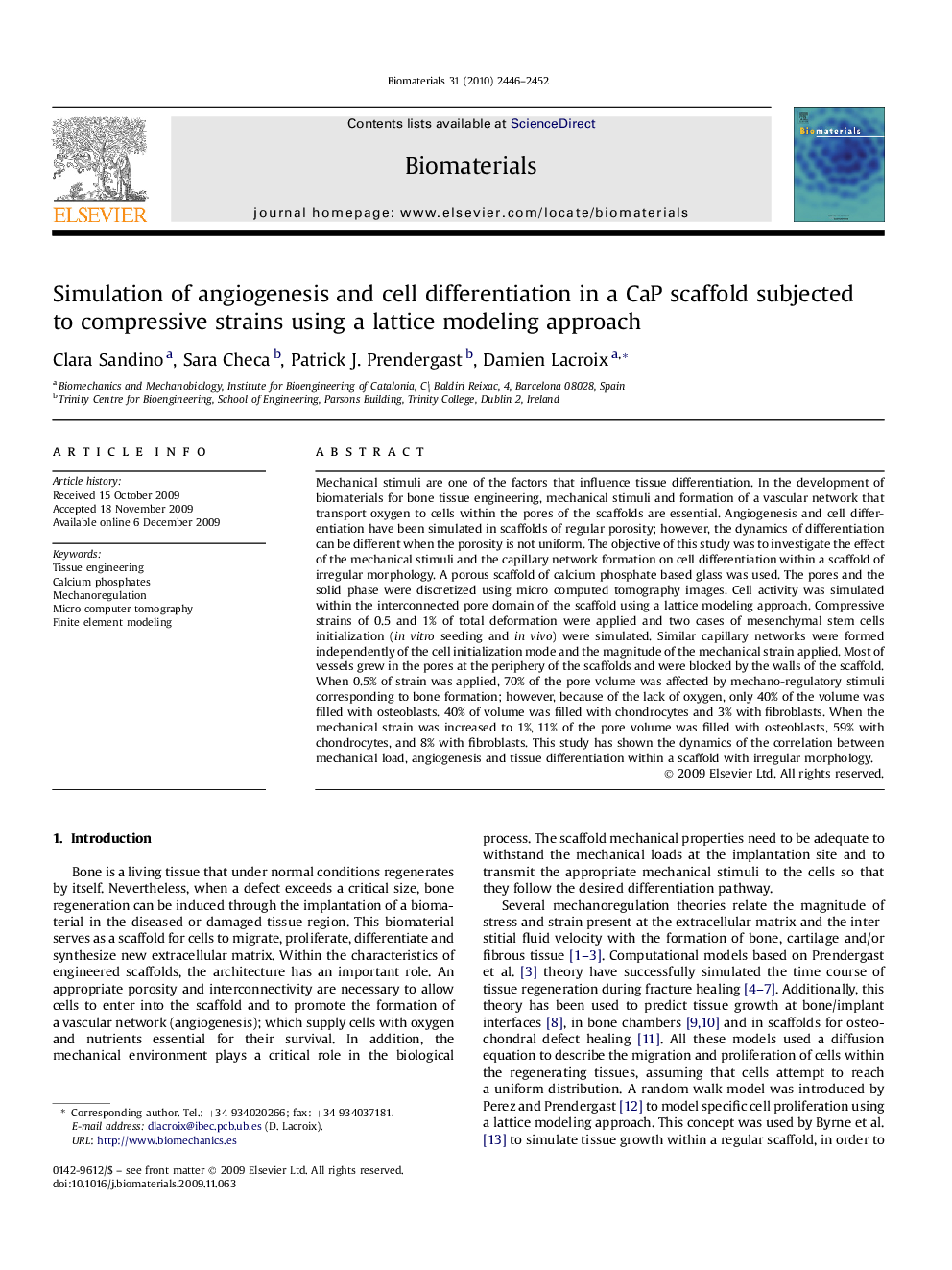| کد مقاله | کد نشریه | سال انتشار | مقاله انگلیسی | نسخه تمام متن |
|---|---|---|---|---|
| 8699 | 602 | 2010 | 7 صفحه PDF | دانلود رایگان |

Mechanical stimuli are one of the factors that influence tissue differentiation. In the development of biomaterials for bone tissue engineering, mechanical stimuli and formation of a vascular network that transport oxygen to cells within the pores of the scaffolds are essential. Angiogenesis and cell differentiation have been simulated in scaffolds of regular porosity; however, the dynamics of differentiation can be different when the porosity is not uniform. The objective of this study was to investigate the effect of the mechanical stimuli and the capillary network formation on cell differentiation within a scaffold of irregular morphology. A porous scaffold of calcium phosphate based glass was used. The pores and the solid phase were discretized using micro computed tomography images. Cell activity was simulated within the interconnected pore domain of the scaffold using a lattice modeling approach. Compressive strains of 0.5 and 1% of total deformation were applied and two cases of mesenchymal stem cells initialization (in vitro seeding and in vivo) were simulated. Similar capillary networks were formed independently of the cell initialization mode and the magnitude of the mechanical strain applied. Most of vessels grew in the pores at the periphery of the scaffolds and were blocked by the walls of the scaffold. When 0.5% of strain was applied, 70% of the pore volume was affected by mechano-regulatory stimuli corresponding to bone formation; however, because of the lack of oxygen, only 40% of the volume was filled with osteoblasts. 40% of volume was filled with chondrocytes and 3% with fibroblasts. When the mechanical strain was increased to 1%, 11% of the pore volume was filled with osteoblasts, 59% with chondrocytes, and 8% with fibroblasts. This study has shown the dynamics of the correlation between mechanical load, angiogenesis and tissue differentiation within a scaffold with irregular morphology.
Journal: Biomaterials - Volume 31, Issue 8, March 2010, Pages 2446–2452